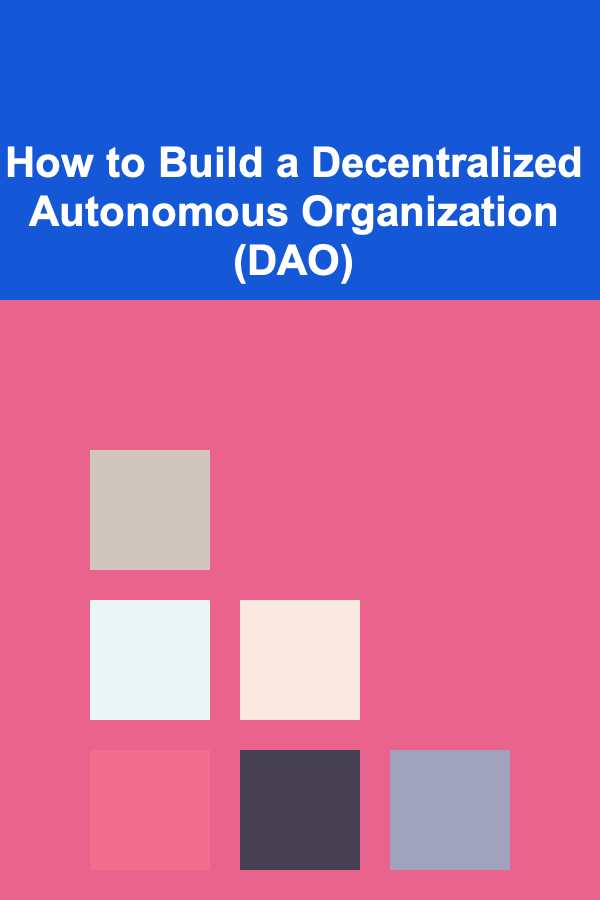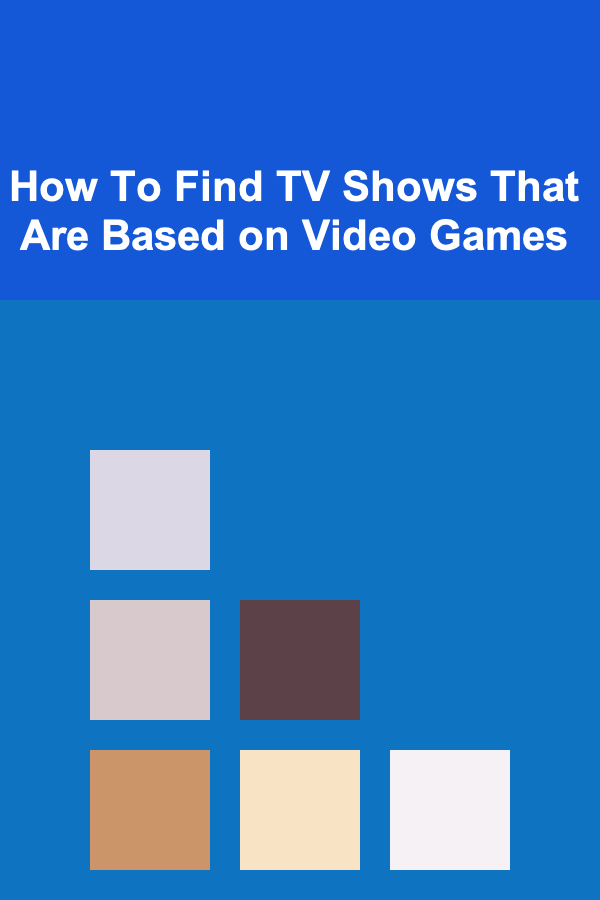
How to Build a Decentralized Autonomous Organization (DAO)
ebook include PDF & Audio bundle (Micro Guide)
$12.99$6.99
Limited Time Offer! Order within the next:

In recent years, the concept of Decentralized Autonomous Organizations (DAOs) has gained significant traction, particularly within the blockchain and cryptocurrency communities. A DAO is a new form of organization, where governance is decentralized, and decisions are made based on smart contracts rather than traditional hierarchical structures. This model challenges conventional business structures, introducing a more democratic, transparent, and efficient way of managing an organization.
This article will explore how to build a DAO, covering its key principles, governance structure, technological requirements, legal considerations, and practical steps for setting up a successful DAO.
What is a Decentralized Autonomous Organization (DAO)?
A DAO is an organization that operates autonomously through code-based protocols known as smart contracts, typically on a blockchain. These contracts automate decision-making and ensure transparency. DAOs are decentralized in that they do not rely on a central authority, such as a CEO or board of directors. Instead, governance is distributed across all members, who participate in decision-making through voting mechanisms. The ultimate goal is to create an organization that runs itself through community-driven rules and processes.
Key Characteristics of a DAO:
- Decentralization: Control is distributed among participants, rather than being centralized in a single entity or group.
- Autonomy: The organization operates based on pre-set rules encoded in smart contracts, with minimal human intervention.
- Transparency: Every transaction and decision made within a DAO is recorded on a blockchain, making them transparent and auditable.
- Token-Based Governance: Participants typically use tokens to vote on proposals and make decisions that affect the organization.
Core Principles of a DAO
Before diving into how to build a DAO, it is essential to understand the core principles that govern such organizations. These principles define how DAOs operate and what sets them apart from traditional organizations.
2.1. Decentralization of Power
In a traditional organization, authority is concentrated in the hands of a few decision-makers. In contrast, a DAO distributes power among all members through a decentralized structure. This ensures that no single individual or group has full control over the organization, making the system more democratic and less prone to corruption or abuse of power.
2.2. Transparency and Trust
Because DAOs operate on blockchain technology, all activities are recorded in a public ledger. This transparency helps build trust among members, as every decision, financial transaction, and proposal is publicly available for scrutiny. This openness promotes accountability, which is essential for the DAO's long-term sustainability.
2.3. Autonomy and Efficiency
DAOs operate without the need for intermediaries, as they rely on smart contracts to automate key processes. This eliminates the need for managers, accountants, or auditors to oversee operations. By removing intermediaries, DAOs can achieve higher efficiency and reduced overhead costs.
2.4. Community-Driven Governance
Governance in a DAO is not controlled by a single entity. Instead, decisions are made through a consensus mechanism that involves the community. Members are given the power to vote on proposals and changes, often by holding tokens that represent voting power. This decentralized governance ensures that decisions reflect the interests of the community rather than those of a select few.
Steps to Build a DAO
Building a DAO requires a combination of technical knowledge, governance expertise, and community engagement. Below are the essential steps involved in creating a DAO.
3.1. Define the Purpose of the DAO
Before setting up a DAO, it is crucial to define its purpose and objectives. DAOs can serve various purposes, from managing a decentralized finance (DeFi) protocol to governing a decentralized application (dApp) or even running a community-driven project. The purpose of the DAO will dictate the rules, governance structure, and tokenomics (the economic model) that the organization will adopt.
- What is the mission of the DAO?
- What problems will it solve?
- How will it benefit the community?
Clearly articulating the DAO's purpose helps attract like-minded individuals and ensures the organization has a clear direction.
3.2. Select the Blockchain Platform
DAOs typically operate on blockchain platforms that support smart contracts. Ethereum is the most widely used platform for DAOs, but other blockchains, such as Binance Smart Chain (BSC), Polkadot, and Solana, also offer support for DAOs. When selecting a blockchain platform, consider the following factors:
- Scalability: The platform should be able to handle high volumes of transactions.
- Security: Ensure the platform has robust security mechanisms to protect against attacks.
- Costs: Consider the transaction fees (gas fees) associated with using the platform.
- Interoperability: Some DAOs may need to interact with other platforms or blockchains, so interoperability is essential.
3.3. Create the DAO's Governance Model
A DAO's governance model defines how decisions will be made and who gets to make them. There are several governance models that DAOs can adopt:
- Token-Based Voting: Token holders vote on proposals. The more tokens a member holds, the more influence they have on decisions.
- Reputation-Based Voting: Members earn reputation based on their contributions or activity within the DAO, and voting power is determined by their reputation rather than token holdings.
- Quadratic Voting: This voting system aims to reduce the influence of large token holders by giving diminishing returns for each additional vote a person casts.
The governance model should align with the DAO's goals, ensuring that it is fair, transparent, and effective.
3.4. Develop Smart Contracts
Smart contracts are the backbone of any DAO, as they automate the organization's processes and enforce the rules. Smart contracts are self-executing contracts with the terms of the agreement directly written into code. For DAOs, smart contracts are responsible for the following tasks:
- Proposal Submission and Voting: Smart contracts can facilitate the submission of proposals and allow token holders to vote on them.
- Fund Distribution: If the DAO has a treasury, smart contracts can automate the distribution of funds based on approved proposals.
- Membership Management: Smart contracts can handle the onboarding and offboarding of members, track contributions, and manage token allocation.
Writing secure and efficient smart contracts is critical to the DAO's success. Many DAO creators rely on established frameworks, such as OpenZeppelin or Aragon, to build their contracts and ensure they follow best practices.
3.5. Set Up the DAO's Tokenomics
Tokenomics refers to the economic model of a DAO, including how tokens are distributed, how they are used for governance, and how they incentivize members. DAO tokens can serve various purposes, such as:
- Governance Tokens: Tokens that give holders the ability to vote on proposals and influence decisions.
- Utility Tokens: Tokens that provide access to certain services or features within the DAO.
- Incentive Tokens: Tokens that reward members for their contributions to the DAO, such as completing tasks, developing software, or participating in discussions.
The distribution of tokens should be fair and incentivize active participation. Tokenomics also plays a role in managing inflation, ensuring that the value of tokens is sustainable over time.
3.6. Build the DAO Community
A successful DAO requires a strong and engaged community. Community members are not only participants in governance but also contributors who help drive the DAO's success. Building a DAO community involves:
- Creating a Clear Value Proposition: Clearly articulate why individuals should join and participate in the DAO.
- Engaging the Community: Host events, discussions, and educational resources to keep members engaged and informed.
- Incentivizing Contributions: Reward members who contribute value to the DAO, whether through development, marketing, or governance participation.
Social platforms, such as Discord, Telegram, and Reddit, are commonly used for DAO community-building, as they allow for real-time communication and interaction among members.
3.7. Launch and Iterate
Once the DAO is set up, the next step is to launch it. However, building a DAO is not a one-time event; it is an ongoing process. DAOs are iterative by nature, and their governance models and structures may evolve over time. After launch, continue to:
- Monitor Performance: Assess how the DAO is functioning, and identify areas for improvement.
- Gather Feedback: Actively listen to the community's concerns and feedback to refine the governance model and operations.
- Implement Proposals: Allow members to submit proposals for changes or improvements, and use the DAO's governance system to vote on them.
The ability to adapt and improve is critical to the long-term success of a DAO.
Legal Considerations and Regulatory Challenges
While DAOs offer significant advantages, they also face legal and regulatory challenges. Since DAOs are decentralized, it can be difficult to determine who is responsible for the organization's actions. Some legal considerations include:
- Jurisdiction: Because DAOs operate across borders, it is unclear which jurisdiction's laws apply. This may present challenges in terms of taxation and liability.
- Legal Status: In many jurisdictions, DAOs are not yet recognized as legal entities. This can make it difficult for DAOs to enter into contracts or interact with traditional businesses.
- Regulatory Compliance: DAOs operating in industries like finance or healthcare may be subject to specific regulations, which they need to comply with.
As DAOs continue to grow, governments and regulatory bodies will likely develop clearer frameworks to address these challenges.
Conclusion
Building a DAO is a complex but rewarding endeavor that requires careful planning, a solid technical foundation, and an engaged community. By embracing decentralization, transparency, and community-driven governance, DAOs offer a revolutionary way to organize, operate, and collaborate in a decentralized world. However, building and maintaining a successful DAO is not without challenges. Ensuring that the governance structure is fair, the technology is secure, and the community is active and engaged are key factors in creating a thriving DAO. As the blockchain ecosystem continues to evolve, DAOs represent a glimpse into the future of organizational management and governance.

How To Find TV Shows That Are Based on Video Games
Read More
How to Maximize Your Impact with Strategic Donations
Read More
How to Stage a Home with Neutral Decor for Maximum Appeal
Read More
How to Use Feedback from Past Yard Sales to Improve Future Sales
Read More
Top Strategies for Reducing Medical Expenses and Saving on Healthcare Costs
Read More
How To Choose the Best Hiking Poles
Read MoreOther Products

How To Find TV Shows That Are Based on Video Games
Read More
How to Maximize Your Impact with Strategic Donations
Read More
How to Stage a Home with Neutral Decor for Maximum Appeal
Read More
How to Use Feedback from Past Yard Sales to Improve Future Sales
Read More
Top Strategies for Reducing Medical Expenses and Saving on Healthcare Costs
Read More